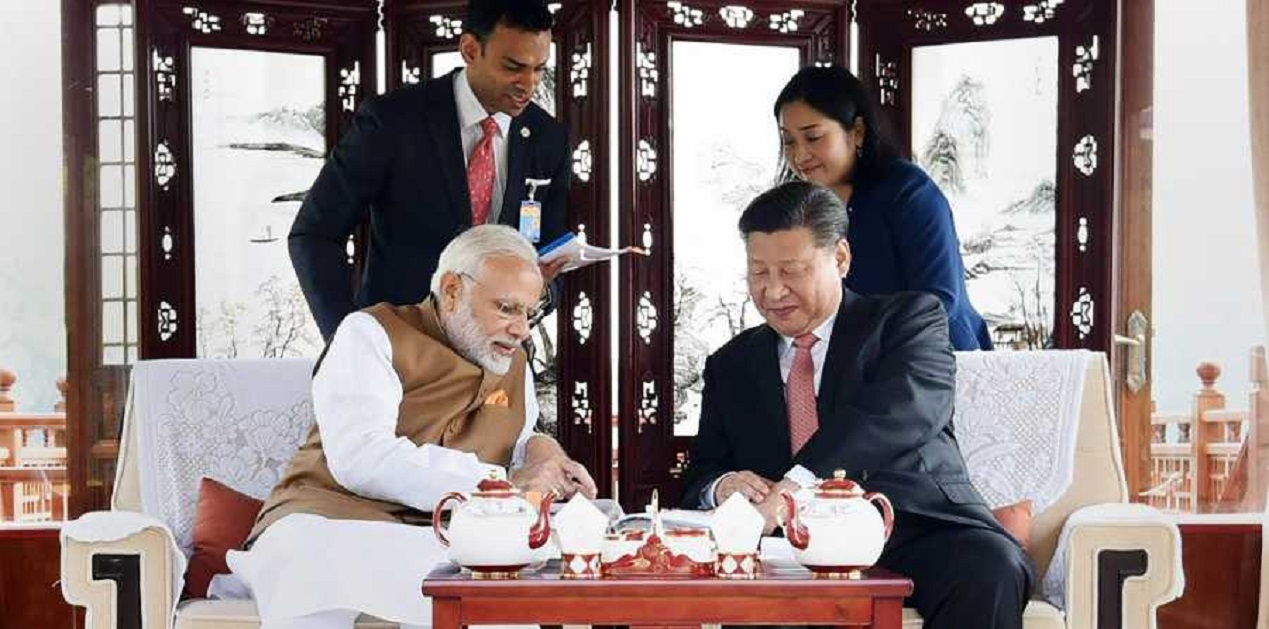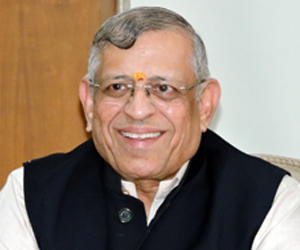It is strategic civilisational diplomacy at its symbolic best. Narendra Modi found that his second informal summit with Xi Jinping at Mahabalipuram in 2019 had been fixed 1,500 years ago by a prince of the Pallava dynasty, which ruled Mahabalipuram from Kanchipuram.
The Pallava prince from Kanchipuram renounced the throne, became a Buddhist monk, known as Bodhi Dharma in India and DaMo in China, almost like how prince Siddhartha became Buddha. His guru asked him to go to Zhen Dan- today’s China.
Bodhi Dharma, who became India’s first spiritual ambassador to China, also emerged as its chief mentor. Regarded as Buddhaabdara (Buddha’s Avatar), he expounded Zen Buddhism and founded the famous Shaolin Temple in China’s Henan province.
Revered as the first Patriarch of China, the rest of the Buddhist world listed him as the 28th in line from Buddha.
Modi is now reviving memories of Bodhi Dharma to position him as the icon of India’s civilisational outreach to China, which is integral to his overarching strategic civilisational diplomacy.
Bodhi Dharma’s foray was not limited to China. Popular as DaMo in China, as Dalma in Korea, Daruma in Japan, Dharmottara in Tibet, with his name echoing in Vietnam too, he ended up as India’s cultural ambassador to most of Asia.
Just as Modi began gradually changing the secular narrative of India into a civilisational narrative within after his historic victory in 2014, he extended it to foreign relations as well. In 2015, he began writing a strategic Hindu-Buddhist civilisational narrative to give thrust to India’s Look East philosophy.
The Mahabalipuram summit, which recalls the 5th-century DaMo today, is an important chapter in Modi’s overarching civilisational narrative to handle the relationship with China that was seriously damaged in the late 1950s and early 1960s. So, the Namo-Xi summit should be seen in the backdrop of Modi’s national strategic narrative.
Post-Independence Secular India - a civilisational orphan
With the rise of radical Islamist terror, particularly the 9/11 attack, Samuel Huntington’s view that the world would become increasingly civilisation conscious virtually binned the utopian Francis Fukuyama’s prognosis of a world free of conflicts founded on free market and liberal democracy.
The politically diverse Western nations began to be seen more as civilisationally Christian, Japan as a civilisation state and China as a civilisation pretending to be a state. But secular India continued to remain orphaned without a civilisational name and a narrative of its own.
Post-Independence India did not attempt to reinstate the national narrative it had lost due to centuries of foreign domination even after it rediscovered it during the freedom movement. Instead, it enjoyed living on borrowed narratives like secularism and socialism.
Lost in fake secularism that increasingly rested on vote-bank politics and in the failed socialism, which proved to be a global disaster, India ignored its spiritual and civilisational foundations that would have helped it develop its own national civilisational narrative. India’s distorted secularism undermined its civilisational assets. Result: India, which had become part of the universal notions of secularism and socialism, had nothing special to talk about itself.
In a seminal essay (to mark the 25th anniversary of Huntington’s clash theory) on civilisational exchanges between China and India titled “Civilisational Perspectives in International Relations and Contemporary China-India Relations”, Ravi Dutt Bajpai (Deakin University, Melbourne, Australia) asserts that India and China were both civilisation states but adds, “Although India’s ancient civilisational legacy originates from its Hindu-Buddhist religious beliefs, the constitutional secularism in the Indian polity makes it difficult for the state to flaunt a religious identity.”
Indian intellectualism was even blind to the historical fact that each materialist ideology that succeeded one another and dominated the world for the last couple of centuries increasingly had a shorter shelf life.
Colonialism lasted for 200 years. Capitalism lasted100 years. Communism lasted 50 years. And globalisation has been pronounced dead by its chief proponent The Economist magazine in just 25 years.
Our nation of thousands of years of known history has seen these dominant thoughts sprouting, growing and, as Swami Vivekananda said, “vanishing like ripples on the face of waters, living a few hours of exultant and exuberant dominance”.
India’s fate as a civilisational orphan continued even after socialism proved to be a global fiasco and secularism turned fake at home. It continued to adopt the socialist narrative for half a century and later a globalist narrative for a quarter more.
In this period, India saw Confucian China re-emerging out of communist China that violently banished Confucius for half a century. India saw ex-communist China establishing over 1,200 Confucian centres and classrooms the world over to present itself as a Confucian civilisation. It saw communist Russia turning Orthodox Christian, socialist Poland turning Roman Catholic.
Yet, it continued with its outdated and borrowed narrative that negated its own spiritual and civilisational foundation, which Mahatma Gandhi in his seminal thesis Hind Swaraj had emphasised as its unifying force. Till Modi came to power, India did not even think of making a draft national narrative for bilateral and multilateral relationship building.
National narrative- an imperative
The world which became obsessed with globalism after the Cold War, recently began rediscovering the need for a national narrative. The idea of a national strategic narrative was felt in the US in 2009. In 2011, the US government and the Woodrow Wilson International Center jointly authored a paper on the national strategic doctrine in 2011.
The paper said: “A narrative is a story. A national strategic narrative must be a story that all Americans can understand and identify within their own lives. America’s national story has always see-sawed between exceptionalism and universalism. We think that we are an exceptional nation, but a core part of that exceptionalism is a commitment to universal values — to the equality of all human beings not just within the borders of the United States, but around the world.”
Later, in 2017, came a paper titled “Stories about ourselves: How national narratives influence the diffusion of large-scale energy technologies” by Joint Global Change Research Institute, United States Maryland School of Public Policy, University of Maryland.
The paper said, “A national narrative rationalises and is supported by the nation’s identity. The narrative gives citizens an awareness of their common values and characteristics as a nation; it also situates a nation among other nations as unique (at least in part). If successful, the national narrative (is) a source of pride domestically and respect from other nations…. Of course, no nation exhibits unanimity around a single story; instead, ‘we find a polyphony of voices, overlapping and crisscrossing; contradictory and ambiguous; opposing, affirming and negotiating their views of the nation.’”
National narrative is no outdated concept. It is very much a contemporary need. Yet the Indian discourse did not attempt a national civilisational and strategic narrative for India, even though the Supreme Court had held as early as in 1995 — which it refused to review even as late as 2016 — that secular India is compatible in cultural terms with Hindu India.
Narendra Modi writes India’s national strategic narrative
Modi’s tryst with Buddha started soon after he became the Prime Minister. He saw Buddha as the civilisational face of India and Buddhism as the most effective bridge to link the culturally Hindu India with the civilisationally Buddhist Asia.
Modi has endeavoured to integrate Buddha with India’s Look East doctrine. He saw that Dharma in Hindu, Buddhist, Sikh, Jain traditions in India and Dhamma in diverse Buddhist traditions in Asia linked people of both traditions more intimately than any single or multiple state policy or pact.
Cognate civilisations vault over state-erected walls to connect people with people. Modi saw the Hindu-Buddhist civilisational nexus as the most potent people-to-people link, which even the modern and ex-communist states like China could not ignore.
The Prime Minister’s strategic Hindu-Buddhist civilisational diplomacy started with his first visit to Japan in early 2015. Modi quickly roped in Japanese Prime Minister Shinzo Abe into a joint Indo-Japan initiative of “Samvad” — Sanskrit word meaning “dialogue” — through strategic think tanks in Japan, Tokyo Foundation and Japanese Foundation, and the Vivekananda International Foundation in Delhi.
And the first Samvad of Hindu-Buddhist nations on the theme of Conflict Avoidance and Environmental Consciousness took place in September 2015. In his video address to the Samvad, Japanese Prime Minister Shinzo Abe said that the idea of Dharma, which was the foundation of Japan’s rule of law, was India’s gift to Japan — a declaration emotionally more powerful than any economic or political pact.
The Samvad
The year 2015 ended with the Bodh Gaya Declaration to make it the global centre of enlightenment. The Samvad II was held in Myanmar in 2017 and Samvad III in Mongolia in September 2019. The Indian and Japanese prime ministers inaugurated each of the three Samvad meets by direct or video address.
The impact of the Modi-Abe civilisational outreach of Samvad on the Buddhist world is phenomenal. The most leading global Buddhist website, the Buddhist Door Global (BDG), which had said in 2017 that “India’s efforts at Buddhist diplomacy are not easy to accomplish”, did a U-turn in 2019 to accept Samvad as “a burgeoning, informal alliance of Buddhist Asian democracies”, adding that “Modi and his allies have been responsible for a resurgence of Buddhist diplomacy unseen in modern Indian history”.
The report concluded, “Words like conflict avoidance and environment consciousness (Samvad’s consistent conference themes) conjure a very specific mode of Buddhist action: one that always leads back to New Delhi’s very unique understanding of transnational Buddhist power.”
Undoubtedly Modi has innovated a national civilisational and strategic narrative for India not just for relating to Asia but for relating to the world, by globalising and positioning Indian-Asian Buddha as the icon of his presentation at the UN recently, contrasting Buddha (enlightenment) with Yuddha (war).
As Namo invokes DaMo at Mahabalipuram
Modi’s choice of distant Mahabalipuram for his informal meeting with Xi has an obvious, deep significance and even a deeper message. Can a China that has discarded communism and begun reinstating neo-Confucianism as its national narrative and an India that has discarded the failed socialism and fake secularism and begun re-writing the national narrative in civilisational terms find their common Hindu-Buddhist civilisational roots in Mahabalipuram? Will the spirit of DaMo help Namo and Xi accomplish that will be seen this weekend and in what unfolds thereafter.
Namo’s strategy is to find positive answers to such and other questions is manifest in his choice of the venue — DaMo’s Mahabalipuram.
The civilisational link between the peoples of India and China has always been stronger than any government-to-government policy declarations. Modi’s attempt seems to be to awaken the unleveraged civilisational impulses to relate to China whose aggression in 1962 damaged India’s trust in its neighbour.
How Modi handled the Doklam issue has obviously convinced the mighty neighbour that India is no more a pushover. Namo is invoking DaMo, the deeper spiritual chord between India and China, to restore mutual trust, which will be the foundation for a stable and trustworthy India-China relationship.
Postscript: Yet another Kanchi connection to China-India relations. The Sage of Kanchi (the Shankaracharya of Kanchi) who lived for 100 years told the writer of this article in the early 1990s that India should settle the border row with China, which the Sage saw as India’s cultural ally. The writer had mentioned this in 2003 to Atal Bihari Vajpayee when as India’s Prime Minister he was going to China. It was then that the NSA-level talks commenced with China for settlement of the border dispute. Whether recalling DaMo by Namo will fulfil the desire of the Kanchi saint remains to Be seen.
This Was Published inThe New Indian Express 11 October 2019.










Post new comment